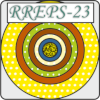Speaker
Description
During the last decade Lead Halide Perovskites (LHPs) have been widely researched in the photovoltaic and light emission fields due to their outstanding optoelectronic properties and exceptional performance. Owing to their low cost and easy fabrication, tremendous achievements were achieved in solar cell, photodetector, light‐emitting diode and laser research fields.
On the other hand, space application of perovskite solar cells (PSCs) is also anticipated, driving much research attention on the stability of PSCs in the space environment, as lightweight, large-area, high-efficiency solar cells are in high demand in the space industry. To be applied in space environment, radiation resistance of such materials is critical. Charged particles, such as protons and electrons can penetrate the into materials, and induce phase and structural deterioration limiting the operation lifetime of devices. In this sense radiation resistance of perovskites is an important issue to deal, prior to its application in space.
In this work CsPbBr3 perovskite thin films, obtained through double source physical vapor deposition method from CsBr and PbBr2, were subjected to proton-beam irradiation (proton energy from 1.4 MeV to 15.5 MeV, dose 1014 – 5×1015p/cm2) in order to assess the durability and radiation tolerance of PSCs against space radiation. We evaluate the effects of proton beams by focusing on the light absorption properties, crystal structure, and morphology by using UV-Vis spectroscopy, optical spectroscopy, X-ray diffraction, and scanning electron microscopy, correspondingly. The results show that proton irradiation with relatively high energy of 15.5 MeV and doses up to 1×1015p/cm2 does not significantly affect the crystal structure of the CsPbBr3 perovskite layer with 750 nm. In contrast, proton irradiation with higher doses up to 5×1015p/cm2 or low energy 1.4 MeV with 1015p/cm2 dose can cause damage to the crystal lattice due to longer exposure time of interaction with lattice ions.
